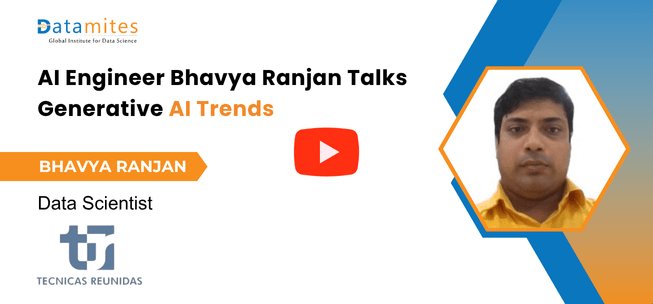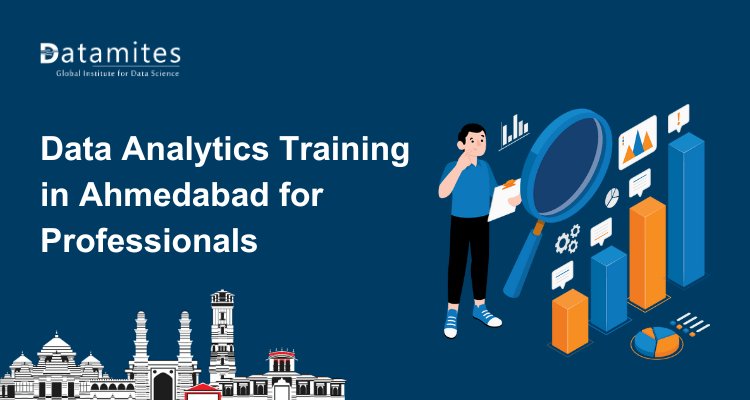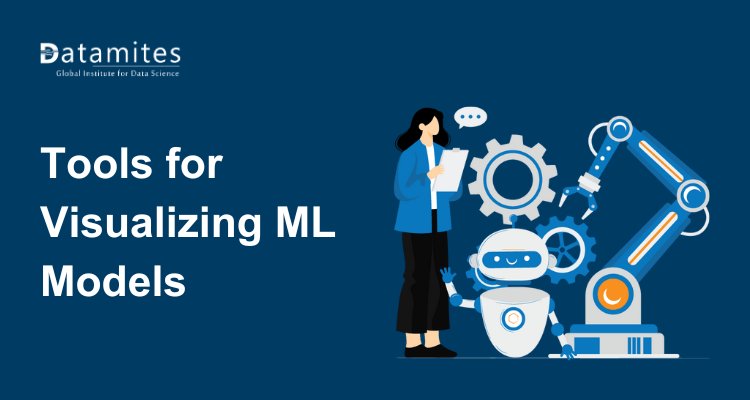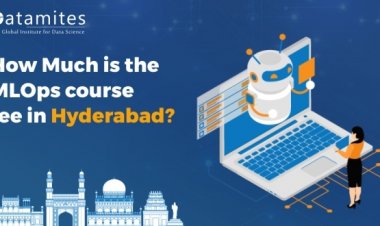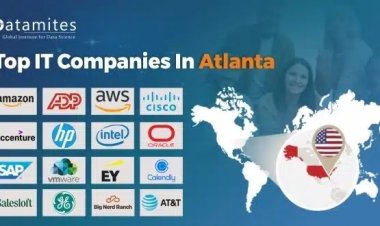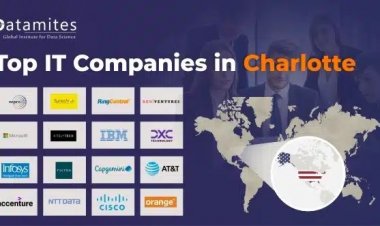AI Engineer Bhavya Ranjan Shares His Generative AI Journey
Bhavya Ranjan’s transition from a 12-year career in mechanical engineering and supply chain management to becoming an AI engineer highlights the power of continuous learning and adaptability.
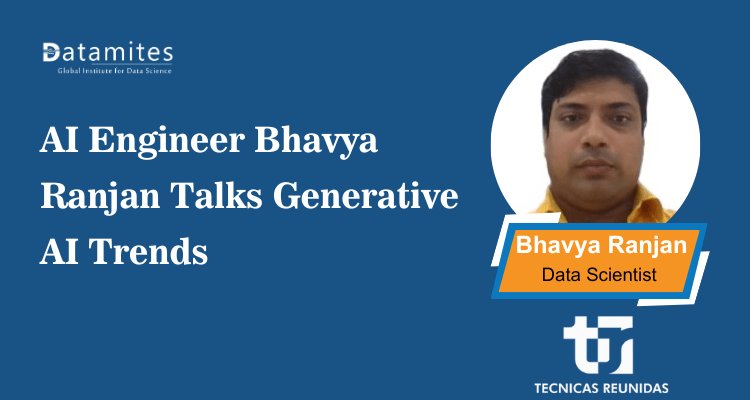
In a world where technology evolves faster than ever, few stories inspire like that of Bhavya Ranjan a mechanical engineer turned AI expert, who redefined his career by diving deep into the transformative realm of Generative AI. From mastering Python to building intelligent chatbots using cutting-edge models like LLaMA 2 and Vicuna, Bhavya’s journey is a testament to the power of curiosity, resilience, and continuous learning. In this exclusive interview, he opens up about his transition, the challenges he overcame, real-world applications he's built, and what the future of Generative AI holds.
An Inspiring Generative AI Journey: Q&A with Bhavya Ranjan
The generative AI market is on an explosive growth path, expected to rise from USD 71.36 billion in 2025 to USD 890.59 billion by 2032, with a remarkable CAGR of 43.4% (Markets and Markets). In this engaging Q&A, Bhavya Ranjan shares his personal challenges, key learnings, and hands-on experiences offering valuable inspiration for anyone aiming to transition into the world of AI.
Q1: Can you introduce yourself and share a bit about your professional background?
I’m Bhavya Ranjan, born and raised in Jharkhand. My educational background is in mechanical engineering followed by an MBA from Loyola College, Chennai. I have around 12 years of experience in supply chain management. Eventually, I decided to shift careers and ventured into data science and machine learning by enrolling in a program at Damites. That decision laid the foundation for my transition into AI.
Q2: What inspired you to transition into Artificial Intelligence after 12 years in the supply chain?
The growing importance of AI and machine learning in every sector caught my attention. I wanted to stay relevant and be part of something futuristic. Though it was a challenging shift especially without a computer science background I was determined. I practiced consistently and learned programming languages, especially Python, which helped me build a strong foundation in data science.
Q3: What challenges did you face while transitioning from a mechanical background to AI?
One of the biggest hurdles was learning to code. Coming from a mechanical background, I had no prior exposure to programming. It took about two months of consistent practice to become comfortable with Python. Understanding new concepts in AI and data science required additional effort, but I realized that since many technologies were new even to experienced developers, I could compete if I stayed committed and adaptive.
Q4: Can you tell us about the AI projects you’re currently working on?
At Technica, I’ve worked on several key AI applications:
- Demand and Time-Series Forecasting projects
- Deep learning models for company insights
- Integration with LLaMA 2, a generative AI model by Meta
- Developed a custom chatbot similar to ChatGPT
- Created various internal applications for financial modeling and supply chain optimization using Generative AI + Python
These projects gave me hands-on exposure to real-world AI use cases.
Q5: What kind of AI architecture have you developed for your chatbot project?
I built a chatbot using the Vicuna model, a generative AI framework comparable to ChatGPT 3.5. It comes in various sizes 7B, 13B, 70B parameters meaning it can process large amounts of information.
For this, I used:
- Backend: Python
- Frontend: HTML, CSS
- Database: SQL
- The architecture involved prompt input via natural language and output generation using Vicuna.
It was a full-stack AI system from scratch.
Q6: What programming tools and technologies are essential for working in generative AI?
To build AI applications, especially web-based tools, frontend technologies like HTML, CSS, and JavaScript are crucial. However, backend programming languages such as Python are equally important for model development. One of the major challenges is the constant evolution of new tools and technologies. Continuous learning is the key.
Q7: What type of data do you use to train or run your generative AI models?
Most generative AI models like LLaMA 2, Vicuna, or GPT-4 are pre-trained on massive datasets. We typically fine-tune or apply these models by using vector stores storing documents (PDFs, DOCX, PPT, Excel) as embeddings. These are then retrieved as per requirements. Although this was popular a year ago, newer models now outperform this method significantly.
Q8: How do you handle preprocessing and data augmentation for your AI models?
Preprocessing involves converting input data into formats the model supports. Previously, we used vector stores, but now we use more optimized techniques built into newer models. Preprocessing ensures that data is organized, clean, and model-friendly. Just like ChatGPT, our models analyze user input, process stored documents, and return intelligent responses.
Q9: What are some real-world applications of the generative AI projects you've worked on?
At Technica, all our generative AI projects serve internal company needs. We are not a service-based company, so our end-users are internal departments. We build tools for functions like financial modeling, supply chain forecasting, and AI-powered chatbots that support operations and decision-making.
Q10: How do you collaborate with your team during these AI projects?
We have a very talented and supportive team. Everyone specializes in different technologies, some focus on HTML/CSS, others on Docker, or cloud deployment. Whenever someone lacks expertise in a tool, they get help from teammates. This collaborative approach saves time and results in faster and more efficient development compared to solo efforts or formal courses.
Q11: How do you see the future of Data Science and Generative AI?
The future is extremely promising. Just 2–3 years ago, generative AI wasn’t even part of the curriculum when I was learning data science at DataMites. We focused on traditional areas like classification, regression, time-series forecasting, etc. But today, everything is shifting rapidly toward generative models.
Q12: What metrics did you use to evaluate your AI models?
When I worked on classification problems, I used metrics like F1 Score, Precision, Recall, and Confusion Matrix (True Positive, False Positive, etc.). While we don’t use these metrics in every real-world project now, understanding them is fundamental. It helped me both academically and practically.
Q13: Have you faced any scalability issues in your projects?
Yes, initially. Many of my models ran well on my personal system but faced performance issues during deployment at the company level. The infra team (IT department) played a vital role in solving those problems. They handled networking, integration with the company’s main server, and scaling the solution for enterprise use.
Q14: What advice would you give to someone looking to make a similar career transition?
- Be consistent: Practice coding daily. Python is beginner-friendly.
- Don’t fear starting over: Even if you come from a non-IT background, it’s possible to learn.
- Stay updated: AI is rapidly evolving. Tools like LLaMA, Vicuna, and ChatGPT are changing the game.
- Build real projects: That’s where real learning happens.
Refer these below articles:
- Saif Ali Khan’s Journey: From Economics Graduate to ML Engineer
- How Punarvitha Kickstarted Her AI/Data Engineer Journey as a Fresher
- From Electronics Engineer to AI/Data Engineer: Praveen’s Path to Success
Key Takeaways from Bhavya Ranjan’s Journey into Generative AI
These key takeaways highlight his challenges, breakthroughs, and insights into the fast-evolving world of Generative AI.
- Career Transformation: Bhavya transitioned from a 12-year career in supply chain management to AI and data science.
- Motivation to Shift: Inspired by the growing impact of AI across industries, he wanted to future-proof his career.
- Challenges Faced: Had to overcome the hurdle of learning programming from scratch, particularly Python.
- Hands-On Project Experience: Worked on demand forecasting, time-series modeling, and deep learning projects.
- Key Technologies in Generative AI: Emphasized the importance of Python and web technologies like HTML/CSS/JavaScript.
Read these below articles:
- Growing Demand for Artificial Intelligence in Agartala
- The Growing Demand for Artificial Intelligence in Imphal
- Rising Demand for Artificial Intelligence in Siliguri
Bhavya Ranjan’s journey is a powerful reminder that it's never too late to reinvent yourself. From supply chain logistics to building intelligent systems with generative AI, his transition proves that with the right mindset, learning curve, and practice, anyone can excel in the AI space. If you're inspired by Bhavya’s story and want to follow a similar path, consider an Artificial Intelligence course in Bangalore to equip yourself with the skills that matter today.
DataMites offers a comprehensive Artificial Intelligence course in Chennai, tailored to suit both freshers and experienced professionals. With hands-on project training, expert mentorship, and strong placement support, it’s an excellent option for those looking to build a successful AI career in the city’s thriving tech industry.
Recognized as one of India’s premier AI institutes by industry authorities like Analytics India Magazine and respected academic bodies such as the IITs and IIMs, DataMites equips learners with internationally recognized certifications from IABAC and NASSCOM FutureSkills. These credentials enhance career prospects in the expanding field of artificial intelligence.
